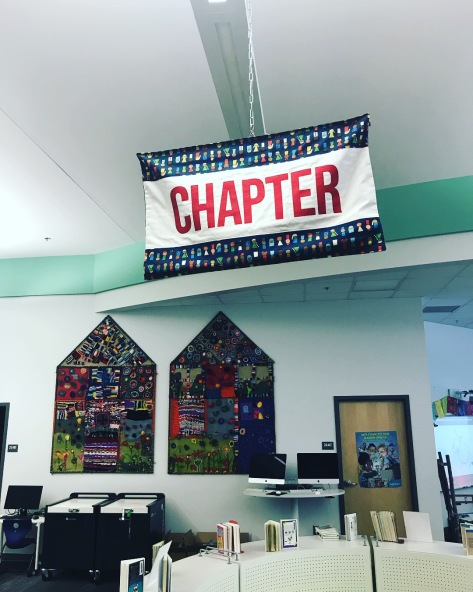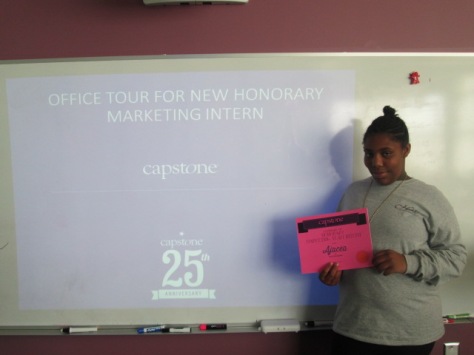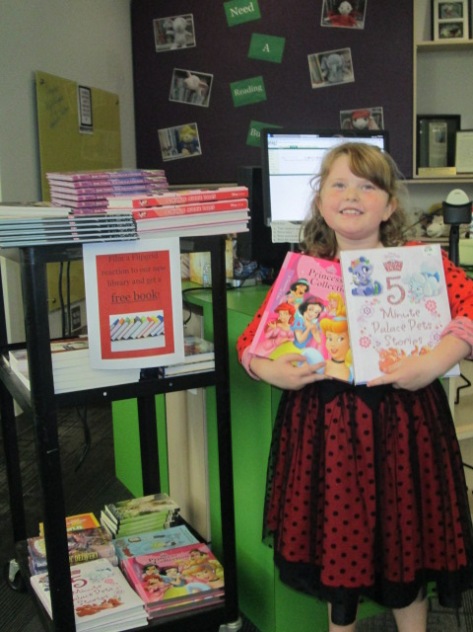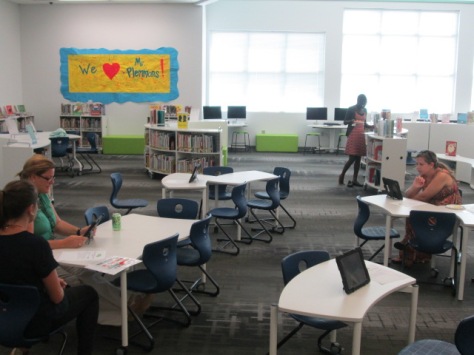
One of the things I’ve loved the most about organizing our library by genre has been the ability to customize the experience for readers. If a section of books isn’t working for how readers find books, then it can be changed. If kids keep asking for a kind of book that is mixed into lots of sections, they you could pull those books into a new section. I’m always watching and listening to the words I’m having to repeat over and over as well as the questions that readers are asking about where books are located.
One noticing this past year was how I was always having to explain that the “E” section or “Everybody” section is where picture books live. The “F” or the “Fiction” section is where chapter books live. Students would search the library catalog and see that something was located in “Sports Fiction”, but that didn’t really translate to the sports chapter book area to them. I decided to fine tune this in Destiny to make searching more user-friendly for readers.

I simply went into each subcategory in Destiny and changed it so that it specifically said “chapter”, “picture”, or “information” next to each genre category. Now, when a student searches, they will see a book like Ghost by Jason Reynolds is in the “Sports Chapter” section.

I also wanted to improve the signs in the library to help students see which sections of the library are “chapter”, “picture”, and “information”. I started browsing around online looking for existing signs or even custom signs that would be helpful and appealing in the library, but I didn’t really see anything I liked. Then, I had the idea that some custom signs could be made using fabric designed by illustrators. I looked at Mo Willems, Eric Carle, and other illustrator fabric, but the fabric that I kept coming back to was the fabric designed by illustrator Christian Robinson.

He visited our school a few years ago to celebrate the release of School’s First Day of School, so we have a special connection with him. His fabric also features a diverse group of individuals which represents both our school, our community, and the books we strive to have in our collection.
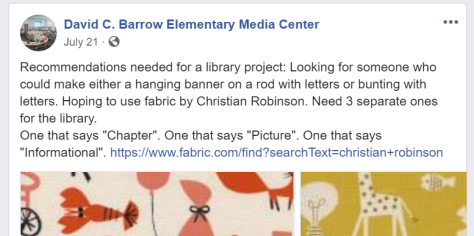

I reached out on social media to see if anyone had any connections with someone who would be willing to work on custom signs for our library using Christian Robinson’s fabric. Several people gave helpful information to think about in designing the signs, but then I got a wonderful email from Barrow parent, Amy Norris, offering to help.

This began a string of emails and conversations to design the 3 signs. Amy offered her design expertise as well as her sewing talents to create the signs. We met in person and sketched out what the signs might look like as 3 rectangular hanging quilts. Then, she went home and created a mock up of several options. I was amazed at her attention to detail and thoughts about maximizing the fabric to cut down on cost. I picked out the design that I thought would work best and ordered the fabric.
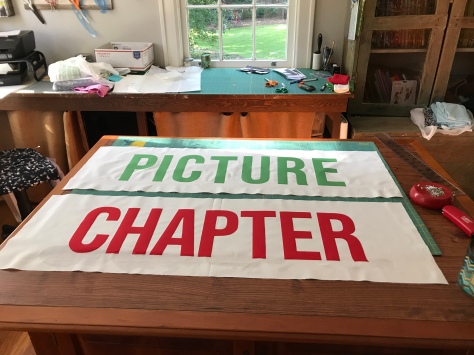
Amy jumped right into designing the signs. She was so enthusiastic about this project, and I couldn’t have asked for a better person to create our signs. She sent little progress updates all along the way and even helped me think through how the signs would hang. I originally was going to use a quilt or curtain rod, but we decided that it was light enough to just use a wooden dowel.
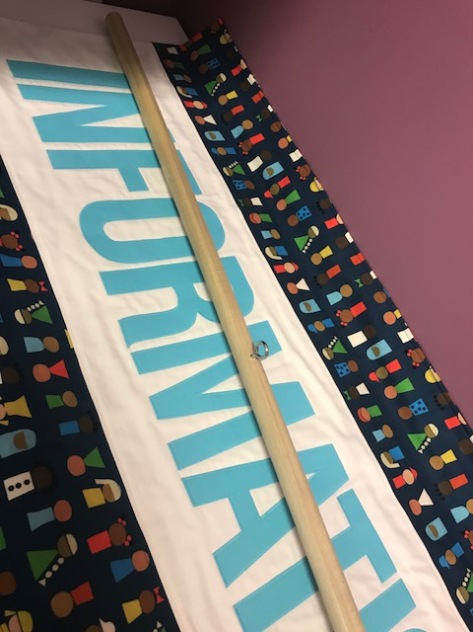
As soon as Amy had the signs finished, she delivered them to school and they were absolutely beautiful. Each section’s word was created in a different color and the Christian Robinson fabric stood out beautifully. Now it was my turn to get the signs installed. I went to Lowes and purchased eye screws, wooden dowels, chain, and s hooks. I cut down the dowels to the length of each sign, and put each quilt onto its rod using the sleeve on the back.
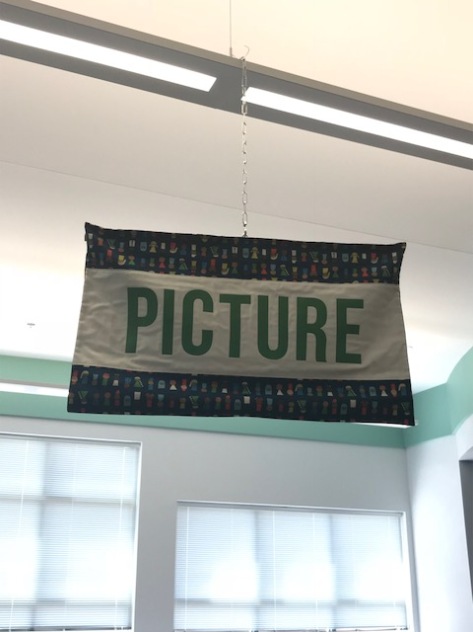
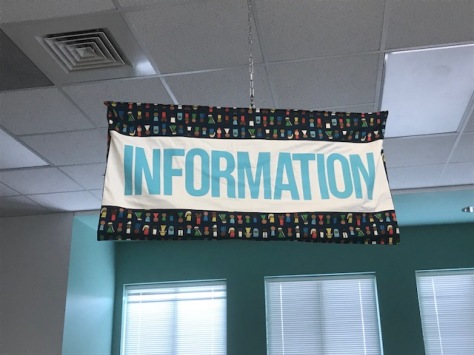
Now, each sign is flying high in our library to help kids see where our 3 main areas of the library are. Since they hang by a single chain, they freely rotate with the gentle air currents. It’s a simple change that I really should have done much sooner, but the library is always evolving, and sometimes a small change is just the thing that was needed to make the collection easier to navigate for readers. I’m so thankful for the many talents that exist in our community, and this project once again reminded me that so many people are out there waiting to support the work happening in schools, but many times we have to put our work and requests out there to help them connect to those opportunities. A huge “Thank You” goes out to Amy Norris for taking the time to create these beautiful signs that we will enjoy for years to come.
